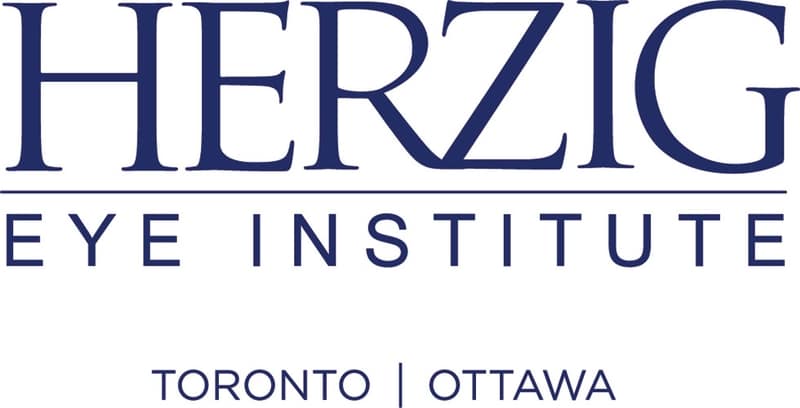Herzig Eye Institute in Refractive Surgery on July 27, 2016
Laser eye surgery is one of the most exciting technological advances in the history of eye care. The Herzig Eye Institute now offers three generations of laser eye surgery — LASIK and PRK, along with the recently approved SMILE, which is available in only a few institutes in North America. SMILE stands for Small Incision Lenticule Extraction, and as the name suggests,the procedure is done with the least disturbance to the surface of the eye.
The Herzig Eye Institute offers all of the generations of laser eye surgery in order to match the correct procedure to the correct patient, so, to understand all of the options available, here is a detailed explanation of how laser eye surgery works.
THREE GENERATIONS OF LASER EYE SURGERY

LASIK (which stands for “Laser Assisted In Situ Keratomileusis”) is a surgical procedure that uses a laser to correct nearsightedness, farsightedness, or astigmatism. In LASIK, a thin flap in the cornea is created using a femtosecond laser. The surgeon folds back the flap, then removes some corneal tissue underneath using an excimer laser. The flap is then laid back in place, covering the area where the corneal tissue was removed.
In nearsighted people, LASIK is performed to flatten the too-steep cornea; in farsighted people, a steeper cornea is the goal. LASIK can also correct astigmatism by smoothing an irregular cornea into a more normal shape.
PRK (photorefractive keratectomy) is the same laser procedure as LASIK. It differs, however, in how the cornea is prepared for the laser treatment. Meanwhile, the SMILE procedure is flapless, creating less disturbance of the corneal nerves, so there is much less chance of prolonged eye dryness. SMILE removes corneal tissue from a deeper, less dense area of the cornea than LASIK, so that more of the corneal integrity is maintained. This is particularly important for patients with thin corneas.
HOW DO LASERS WORK?
The excimer laser emits a cool beam of ultraviolet light of a specific wavelength (typically 193 nanometers) to precisely remove corneal tissue. When the surface of the cornea is reshaped in the right way, it allows light rays to focus properly onto the retina for clear vision. These high-energy pulses of ultraviolet light penetrate only a tiny amount of the cornea and have the ability to remove as little as 0.25 microns of tissue at a time (one micron is a thousandth of a millimeter).
Lasers correct nearsightedness by flattening the cornea and correct farsightedness by making the cornea steeper. Also, astigmatism can be corrected by smoothing an irregular cornea into a more normal shape.
Excimer lasers are controlled by computer settings programmed to correct your specific refractive error. Your surgeon will program the excimer laser with the desired measurements in order to reshape your cornea and treat your prescription.
Most modern excimer lasers have automated eye-tracking systems that monitor eye movements and keep the laser beam on target during surgery. Studies have shown that eye trackers produce better outcomes and decrease LASIK complications compared with lasers not utilizing eye-tracking systems.
CHOOSING THE PRK PROCEDURE
With PRK, surface cells are removed and the laser is applied. PRK is commonly referred to as “surface ablation,” meaning a laser procedure that is applied to the surface of the cornea. PRK may be the appropriate procedure when:
- A pre-existing problem is present on the cornea, which can be eliminated with PRK and result in better vision than LASIK or SMILE.
- There is a structural abnormality in the cornea that makes LASIK or SMILE unsafe.
THE NEW GENERATION OF SMILE
SMILE has distinct advantages because, since there is less disturbance of the corneal nerves, there is much less chance of prolonged dryness of the eyes – one of the most common postoperative issues with LASIK.
Also, the SMILE procedure removes corneal tissue from a deeper, less dense area of the cornea than LASIK, so that more of the corneal integrity is maintained. This is particularly important for patients with thin corneas who typically are treated with PRK (photorefractive keratectomy), which works very nicely but causes some discomfort and takes some time for full visual recovery.
Most of these patients who were not candidates for LASIK can now have SMILE, allowing them to recover as quickly as LASIK.
THE RIGHT PROCEDURE FOR EACH PATIENT
Our promise is to help you achieve your best possible vision, often better than with eyeglasses or contact lenses.
Most other facilities don’t offer more than one option. When you come to the Herzig Eye Institute, you can take comfort in knowing that our surgeons are not limited by a single procedure. Their goal is to customize a treatment that will provide you with the best result possible.




